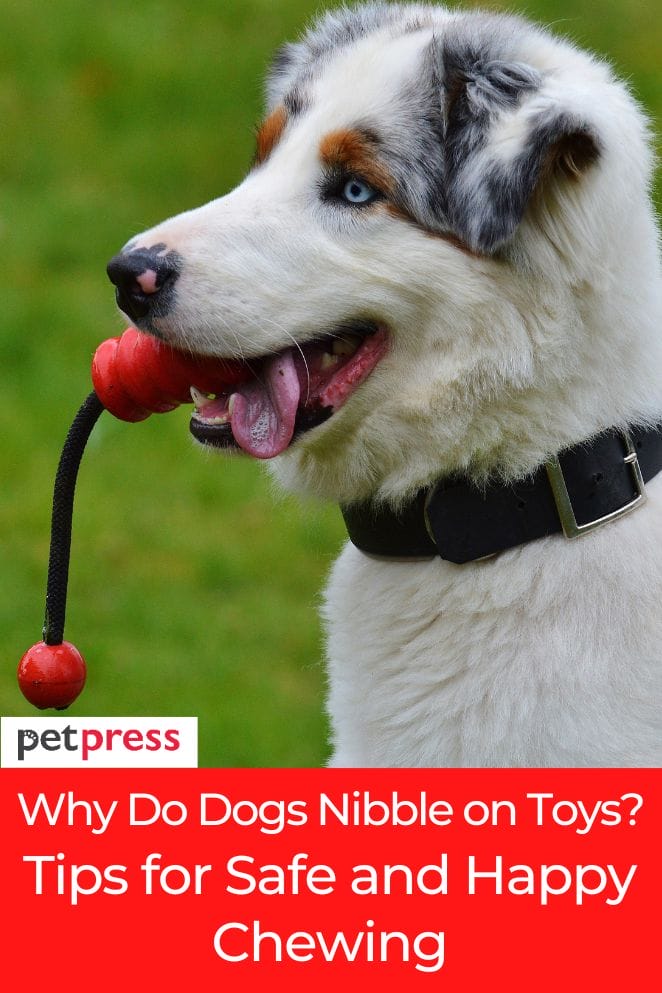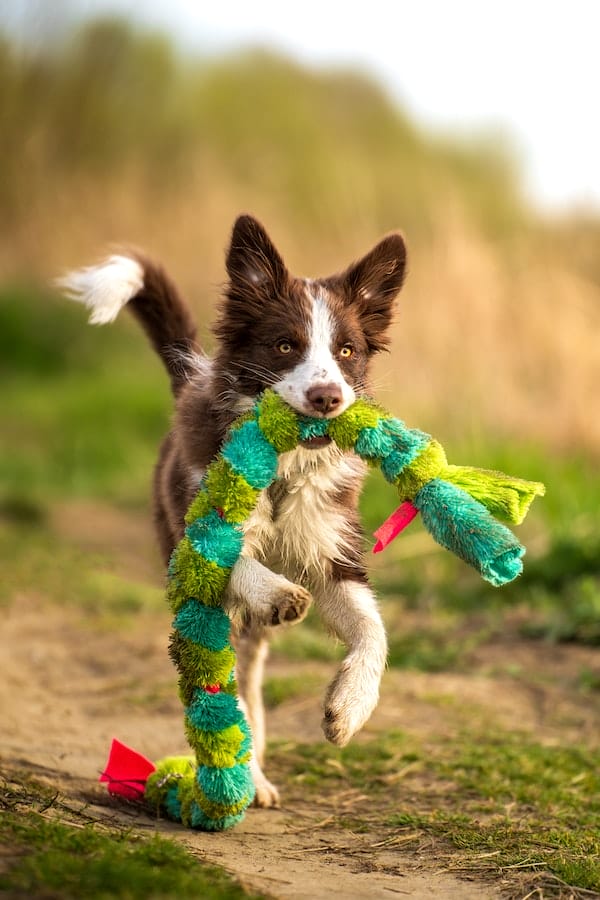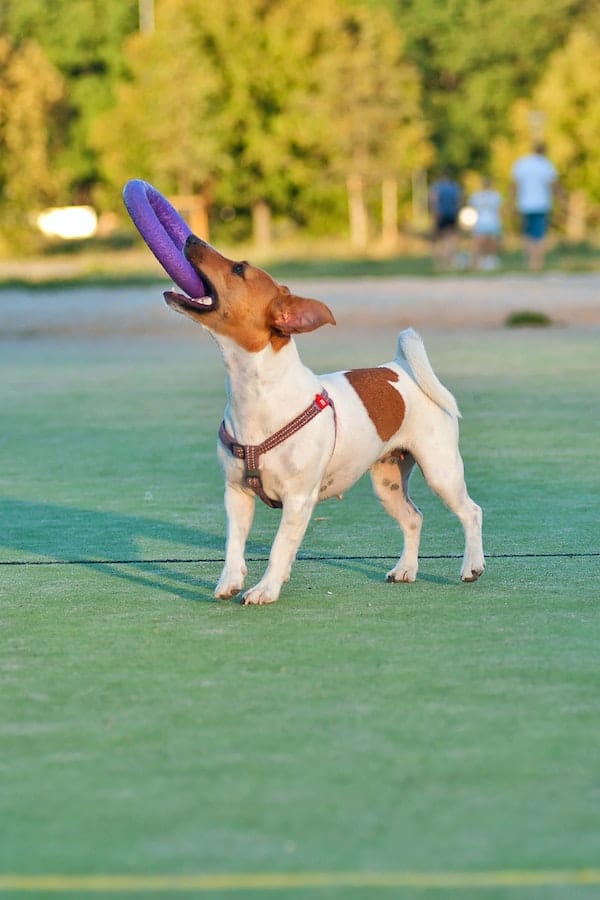
Ever found yourself pondering why your four-legged companion enjoys nibbling on their playthings so much?
Well, it’s a deeper matter than it may seem.
In this piece, we’ll delve into the intriguing motivations behind why dogs indulge in toy nibbling and offer some helpful advice on selecting the safest chew toys for your cherished furry friend.
Why Do Dogs Nibble on Toys?
To keep their teeth clean and healthy
Much like us, our canine companions need to tend to their dental hygiene.
One of the fundamental rationales behind dogs’ penchant for nibbling on toys revolves around the upkeep of their teeth.
This innate behavior aids in the removal of pesky plaque and tartar buildup, effectively diminishing the likelihood of encountering dental issues like cavities and gum disease.
It’s essentially nature’s way of bestowing upon them a rudimentary dental care regimen!
To relieve boredom or stress
Dogs, renowned for their innate intelligence, can experience bouts of ennui or stress when devoid of engaging activities.
The act of nibbling on toys serves as a splendid pastime, delivering a mental workout that helps combat feelings of weariness and anxiety.
Hence, when you catch your furry friend engrossed in the delightful task of toy gnawing, consider it their subtle way of conveying, “I’m in dire need of some amusement!”
To play and have fun
Dogs are inherently playful creatures, and toys serve as their portal to boundless amusement.
Nibbling on toys not only bestows upon them physical exertion but also engages their minds in the realm of playful exploration.
It’s a delightful pursuit that keeps their spirits high and bodies agile.
To explore their surroundings
Dogs, intriguingly, perceive the world predominantly through their mouths.
Much like we employ our hands to touch and sense objects, chewing on toys is the equivalent of a tactile adventure.
Through this oral exploration, they familiarize themselves with the varied textures, flavors, and scents of the objects encompassing their environment.
To soothe their gums
Notably, puppies go through a teething phase, during which their tender gums can become sore and uncomfortable.
In such trying times of dental development, chewing on toys becomes an innate and instinctual recourse.
It offers these young canines a measure of solace as their new teeth emerge, effectively alleviating the discomfort associated with this transitional phase.

Tips for Choosing Safe Chew Toys for Your Dog
Now that we understand why dogs love to nibble on toys, let’s ensure they do it safely. Here are some essential tips for choosing the right chew toys for your furry companion:
Opt for toys made from non-toxic materials
Prioritize toys crafted from non-toxic materials that guarantee your pet’s safety and well-being.
Opting for such toys ensures that your furry companion can revel in their playtime without any risk of ingesting harmful substances, providing you with peace of mind as a responsible pet owner.
Choose toys that are the appropriate size for your dog’s breed and age
When selecting toys, take into account the size of the toy in relation to your dog’s breed and age.
This consideration is crucial as it ensures that the chosen toy is neither too small, posing a choking hazard, nor too large, making it unwieldy for your pet to enjoy.
By aligning the toy size with your dog’s specific needs, you optimize their playtime experience.
Consider your dog’s chewing style
Reflect on your dog’s unique chewing style during the toy selection process.
Dogs exhibit a spectrum of chewing behaviors, ranging from gentle nibbling to vigorous chewing.
Understanding your pet’s inclination in this regard allows you to cater to their preferences effectively.
For instance, a delicate chewer might favor softer, plush toys, while a more robust chewer may require durable, heavy-duty options that can withstand their enthusiastic gnawing.
Regularly inspect toys for wear and tear and replace them when they become damaged
It’s imperative to establish a routine of diligent toy inspection to ensure your pet’s continued safety and enjoyment.
Check your dog’s toys regularly for signs of wear and tear, and promptly replace any items that show damage or deterioration.
This proactive approach safeguards your furry friend from potential hazards, such as ingesting small, broken toy parts or encountering sharp edges that could harm their delicate mouths.
Provide a variety of textures and types of toys to keep your dog engaged
To sustain your dog’s interest and enthusiasm during playtime, consider the wisdom of offering a diverse array of toy textures and types.
Dogs, like humans, appreciate novelty and variety.
By introducing different textures, shapes, and play styles, you keep their cognitive and physical faculties engaged, preventing boredom and fostering mental stimulation.

Conclusion
Dogs nibble on toys for a range of reasons, including dental health maintenance and relief from boredom and stress.
This natural behavior enriches their lives, and choosing appropriate, safe chew toys enhances their enjoyment of this activity.
In summary, understanding the motivations behind toy nibbling and providing suitable toys is a way to ensure a healthier and happier life for your furry companion.
FAQs
No, it’s important to choose toys that are safe and appropriate for your dog’s size, age, and chewing style. Always supervise your dog during playtime.
Keep a close eye on the condition of your dog’s toys. Replace them when they show signs of wear and tear to prevent choking hazards.
Yes, there are toys designed to soothe teething puppies’ sore gums. Look for soft, rubbery toys that are gentle on their mouths.


GIPHY App Key not set. Please check settings